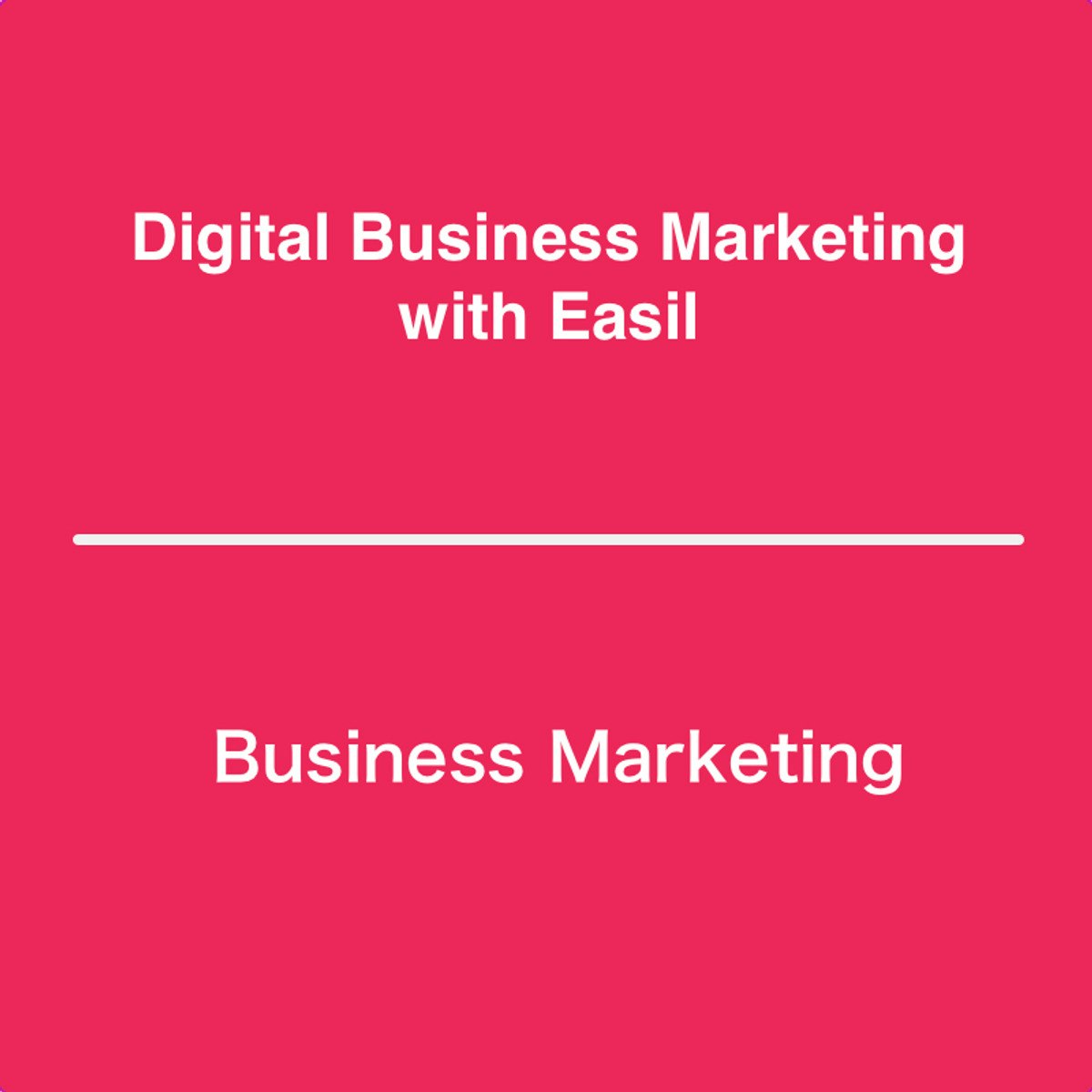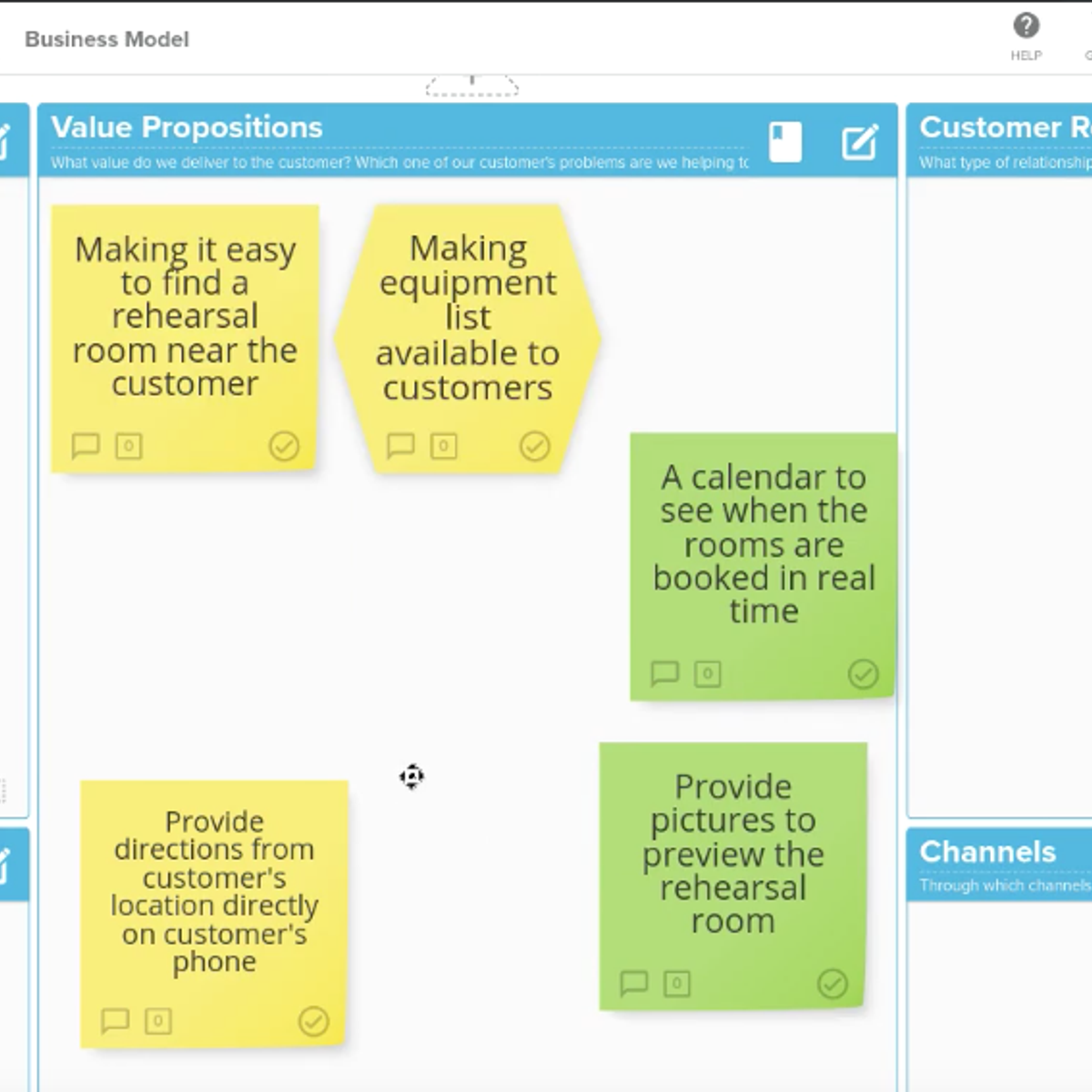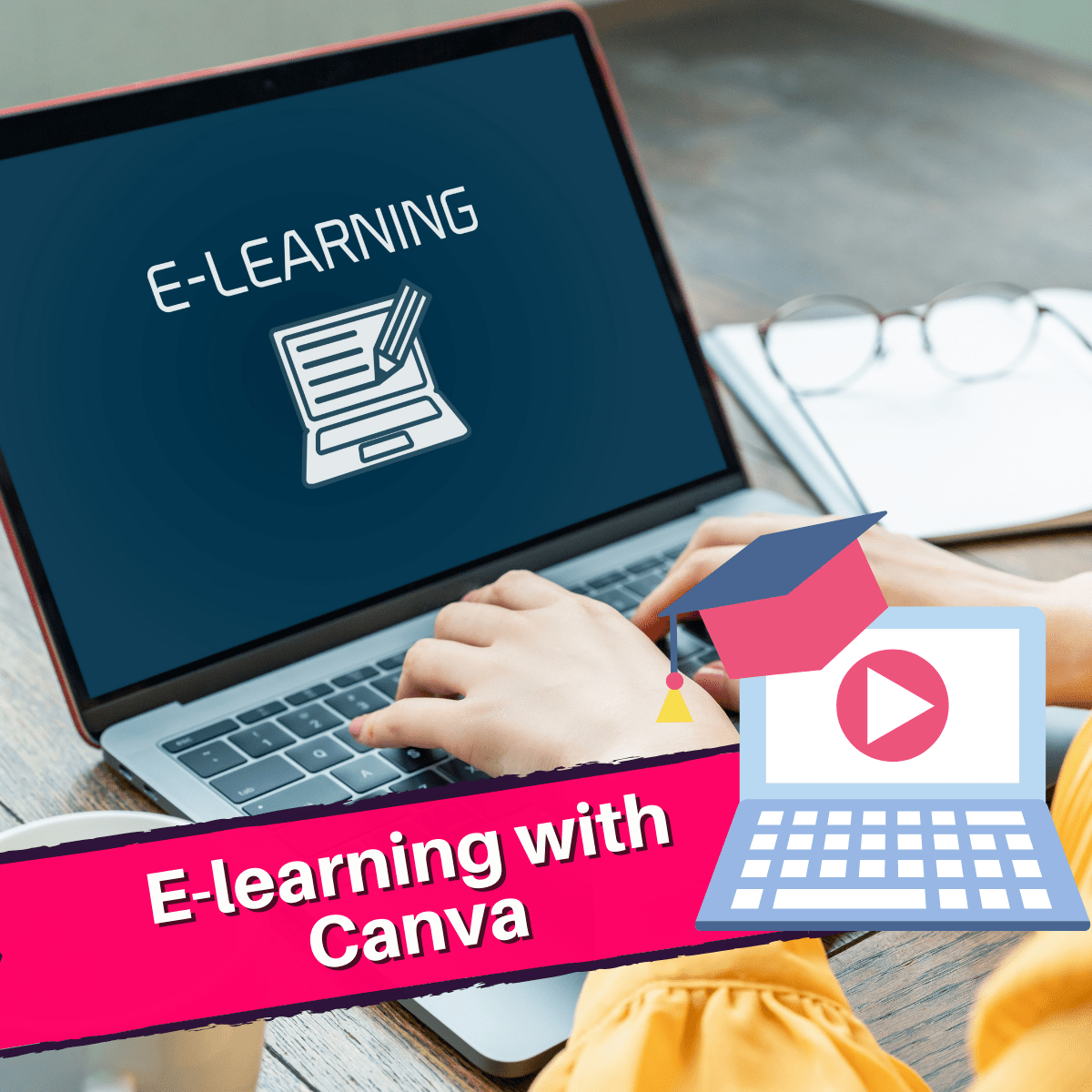Back to Courses









Business Courses - Page 71
Showing results 701-710 of 2058

Digital Business Marketing with Easil
By the end of this project, you will know how to use Easil to digitally promote and advertise your business on Social Media. You will have learned how to create a Facebook Ad and a Facebook Cover with help of Easil. We will both use templates, and create designs from scratch.
Consumers are constantly overloaded with information and images in social media. Part of social media marketing is learning creative ways to draw attention to products and services, oftentimes on a lean budget. In this course, learners will create edited social media photo posts using the free version of Easil. Easil is a web based all-in-one tool that helps you create visual content online.
Learners can easily create and implement creative edits with online design tools to use when marketing their business.
We can use Easil to complete this project because it provides all the tools you need to create an organized and visually appealing product while offering a variety of options for sharing and collaboration.
Note: This course works best for learners who are based in the North America region. We’re currently working on providing the same experience in other regions.

Innovation Through Design: Think, Make, Break, Repeat
The evolution of design has seen it become a discipline no longer limited to the concerns of a singular, specific domain and develop to become a pathway for solving complex, nonlinear problems. Design is becoming a capability-enhancing skill, equipping people with the ability to deal with uncertainty, complexity and failure.
In this course, we demonstrate how you can use design as a way of thinking to provide strategic and innovative advantage within your profession. Suitable for anyone who is curious about design and translating the processes and tools of design thinking into innovative opportunities, over 5 weeks we explore, apply and practice the design process: think, make, break and repeat.
Through introducing theoretical concepts and examining industry case studies with leading Australian design firms, we investigate design as learning about the context (the thinking part), building prototypes as tangible representations (the making part) and testing potential solutions (the breaking part). We build on this by showing the productive value of moving through the process quickly and often (the repeating part), to improve ideas and develop new insights.
Throughout the course, you will follow us through three of Australia’s most exciting design offices and learn from practicing designers and leaders in design. This insight into industry will enable you to develop a comprehensive understanding of design and the role it can and does play within the innovation landscape. You will leave this course with a set of practical tools and techniques to apply to situations within your own professional context, to translate problems into opportunities and solutions, and ultimately to innovate through design.

Leadership in 21st Century Organizations
Meet Jim Barton, the new CEO of Santa Monica Aerospace. Jim's job won't be easy: the company's hemorrhaging cash, struggling to regain investors' trust after an accounting scandal, and striving to transform its culture to become a more global competitor. In this course, you’ll travel with Jim as he takes on leadership challenges ranging from strategy execution, to inspiring people, to maintaining an ethical approach. Experts agree that twentieth-century leadership practices are inadequate for the stormy twenty-first-century present. This provocative course equips you with the insights you'll need to rise with the occasion of a rapidly shifting business landscape.
The course is based on a book, Harder Than I Thought: Adventures of a 21st Century Leader, by Robert D. Austin, Richard L. Nolan, and Shannon O'Donnell, published by Harvard Business Review Press. Purchase of the book is optional. If you want more information about the book or wish to buy it, see https://hbr.org/product/harder-than-i-thought-adventures-of-a-twenty-first/an/10332-HBK-ENG or http://www.amazon.com/Harder-Than-Thought-Adventures-Twenty-First/dp/1422162591
After taking the course, you'll be able to:
o Enact your own personal leadership approach, derived from your ongoing evaluation of how Jim Barton has handled his leadership situation, as well as from established leadership concepts and frameworks;
o Avoid leadership actions that might have worked in the past, but are not suited to a newly challenging 21st century world;
o Navigate treacherous new 21st century leadership challenges, such as greater reliance on specialized workers or the need to respond to external scrutiny in an increasingly transparent world (and many more);
o Avoid "slippery slope" ethical failures, and think more clearly about the separation between public and private life for a 21st century leader.

Behavioral Finance
We make thousands of decisions every day. Do I cross the road now, or wait for the oncoming truck to pass? Should I eat fries or a salad for lunch? How much should I tip the cab driver? We usually make these decisions with almost no thought, using what psychologists call “heuristics” – rules of thumb that enable us to navigate our lives. Without these mental shortcuts, we would be paralyzed by the multitude of daily choices. But in certain circumstances, these shortcuts lead to predictable errors – predictable, that is, if we know what to watch out for. Did you know, for example, that we are naturally biased towards selling investments that are doing well for us, but holding on to those that are doing poorly? Or that we often select sub-optimal insurance payment plans, and routinely purchase insurance that we don’t even need? And why do so many of us fail to enroll in our employer’s corporate retirement plans, even when the employer offers to match our contributions?
Behavioral finance is the study of these and dozens of other financial decision-making errors that can be avoided, if we are familiar with the biases that cause them. In this course, we examine these predictable errors, and discover where we are most susceptible to them. This course is intended to guide participants towards better financial choices. Learn how to improve your spending, saving, and investing decisions for the future.

Critical thinking: reasoned decision making
Making decisions in today's world, a world increasing in complexity, with broad changes and uncertainty, creates the need of approaches that allow us to discern the real problems and the causes that create them. Identifying these problems, in most cases, requires challenging the assumptions on which we base our judgments, regarding the world and its realities.
Critical thinking could be defined, as "that way of thinking - on any subject, content or problem - in which the thinker improves the quality of his thinking by seizing the inherent structures of the act of thinking and by subjecting them to intellectual standards". Critical thinking helps making decisions within a company, selecting the best action for the organization.
In this course of critical thinking the students will learn the tendencies, approximations and assumptions on which their reflections are based, and the conditions and the outcomes derived from their ways of thinking. This reflective thought is the active, careful and persistent examination of all beliefs in the light of the fundamentals that support them and their conclusions.
The reasoned decisions that the world requires, occur in many different areas, especially in business decisions, related to strategies, in the solution of problems in organizations, in the solution of social problems and in corporations’ social and ethical responsibility. In this online course the approaches will be oriented to analyze the critical thinking required in these areas.

Create an online brainstorming with Stormboard
In this 2 hours project-based course you will explore Stormboard and learn all of its main functionalities, creating a business model brainstorm for your team. You will create and share "storms", use sticky notes and connectors to organize flows and dependencies, add rich content and collaborate with shared documents and virtual whiteboards.

Create e-learning content with Canva for your students
At the end of this project, you will be able to create e-learning content for your students with Canva's features for educators. You will be able to create several educational content with Canva for free.
Canva is a multi-functional platform that will make it easier for you to create graphic designs. With this project, you will be able to use a new Canva program that allows teachers to create, publish, and share teaching models on Canva with your students.
This project is for educators and teachers, who would like to use Canva to create educational content for their students.

Enhance Organizational Communications with Slack
By the end of this project, you will learn how to enhance organizational communications with Slack, the business communications platform.
To complete this project, you will create your own workspace, add public and private channels, and develop a collaborative environment. To support your new digital environment, you'll invite others to your Slack workspace and bring their contributions into unique channels for work projects, planning, brainstorming, problem-solving, and information-sharing. You will also amp up the effectiveness of workspace communications by using channel and individual tags to loop others in on relevant information.
Note: This course works best for learners who are based in the North America region. We’re currently working on providing the same experience in other regions.

Introduction to Data Analysis Using Excel
The use of Excel is widespread in the industry. It is a very powerful data analysis tool and almost all big and small businesses use Excel in their day to day functioning. This is an introductory course in the use of Excel and is designed to give you a working knowledge of Excel with the aim of getting to use it for more advance topics in Business Statistics later. The course is designed keeping in mind two kinds of learners - those who have very little functional knowledge of Excel and those who use Excel regularly but at a peripheral level and wish to enhance their skills. The course takes you from basic operations such as reading data into excel using various data formats, organizing and manipulating data, to some of the more advanced functionality of Excel. All along, Excel functionality is introduced using easy to understand examples which are demonstrated in a way that learners can become comfortable in understanding and applying them.
To successfully complete course assignments, students must have access to a Windows version of Microsoft Excel 2010 or later.
________________________________________
WEEK 1
Module 1: Introduction to Spreadsheets
In this module, you will be introduced to the use of Excel spreadsheets and various basic data functions of Excel.
Topics covered include:
• Reading data into Excel using various formats
• Basic functions in Excel, arithmetic as well as various logical functions
• Formatting rows and columns
• Using formulas in Excel and their copy and paste using absolute and relative referencing
________________________________________
WEEK 2
Module 2: Spreadsheet Functions to Organize Data
This module introduces various Excel functions to organize and query data. Learners are introduced to the IF, nested IF, VLOOKUP and the HLOOKUP functions of Excel.
Topics covered include:
• IF and the nested IF functions
• VLOOKUP and HLOOKUP
• The RANDBETWEEN function
________________________________________
WEEK 3
Module 3: Introduction to Filtering, Pivot Tables, and Charts
This module introduces various data filtering capabilities of Excel. You’ll learn how to set filters in data to selectively access data. A very powerful data summarizing tool, the Pivot Table, is also explained and we begin to introduce the charting feature of Excel.
Topics covered include:
• VLOOKUP across worksheets
• Data filtering in Excel
• Use of Pivot tables with categorical as well as numerical data
• Introduction to the charting capability of Excel
________________________________________
WEEK 4
Module 4: Advanced Graphing and Charting
This module explores various advanced graphing and charting techniques available in Excel. Starting with various line, bar and pie charts we introduce pivot charts, scatter plots and histograms. You will get to understand these various charts and get to build them on your own.
Topics covered include
• Line, Bar and Pie charts
• Pivot charts
• Scatter plots
• Histograms

Financial Planning for Young Adults
Financial Planning for Young Adults (FPYA), developed in partnership with the CFP Board, is designed to provide an introduction to basic financial planning concepts for young adults. The FPYA course is organized across eight separate modules within a 4-week window. Topics covered include financial goal setting, saving and investing, budgeting, financial risk, borrowing and credit. Because financial planning is such a personal topic, you will be encouraged to define your own financial goals and objectives while we discuss concepts and provide tools which can be applied in helping you reach those goals.
Within each module, you will view a combination of traditional lecture style videos along with video vignettes that introduce financial topics for discussion among participants. The video vignettes provide a unique and exciting component to this course. Each vignette introduces a real-world scenario where financial decisions must be made and financial planning concepts can be applied. You will be challenged to think critically about each scenario and decide how you might come to a resolution if ever faced with a similar situation.
Finally, the course also includes material throughout which is focused on career opportunities in financial planning, including video interviews with actual CFP® professionals and other professionals working in this exciting and growing career area. The final module in the class is devoted to the topic of financial planning as a career.
Popular Internships and Jobs by Categories
Browse
© 2024 BoostGrad | All rights reserved


